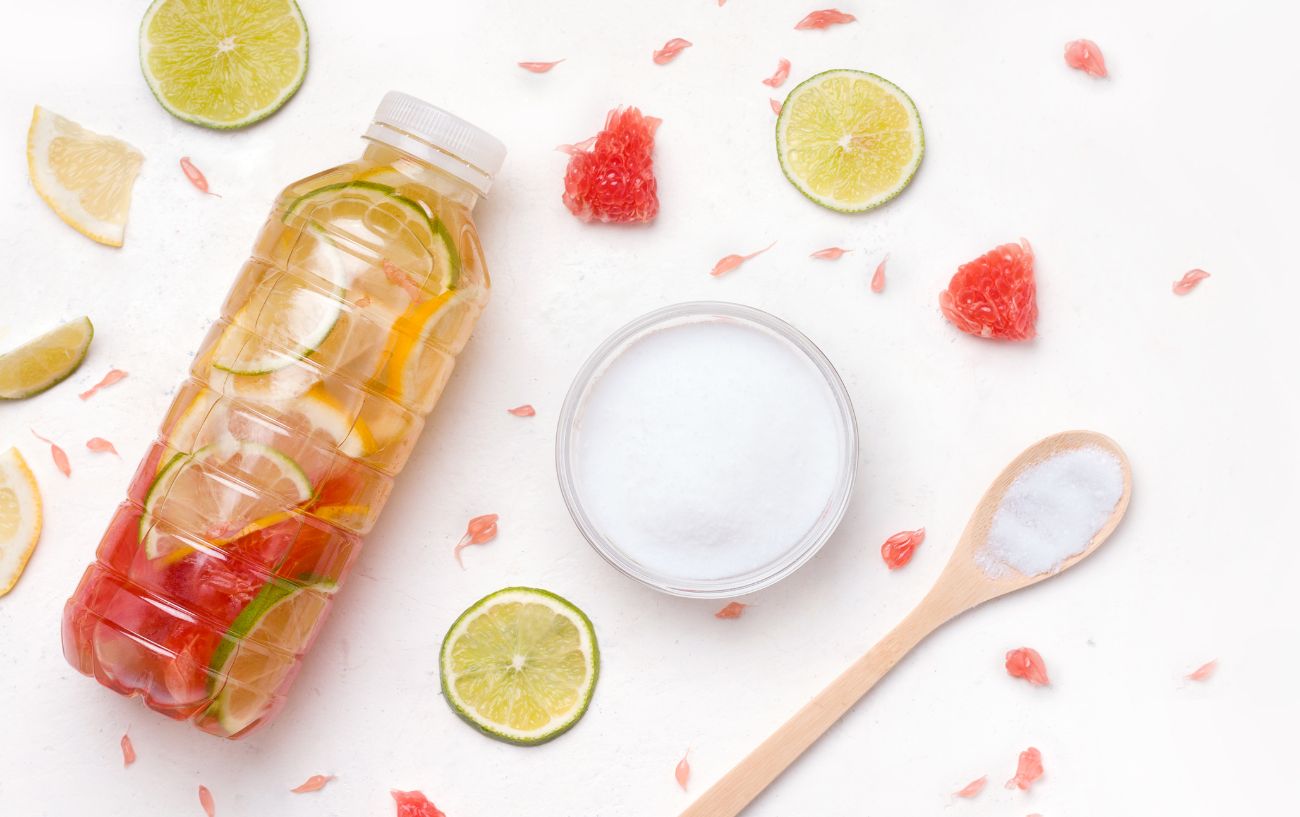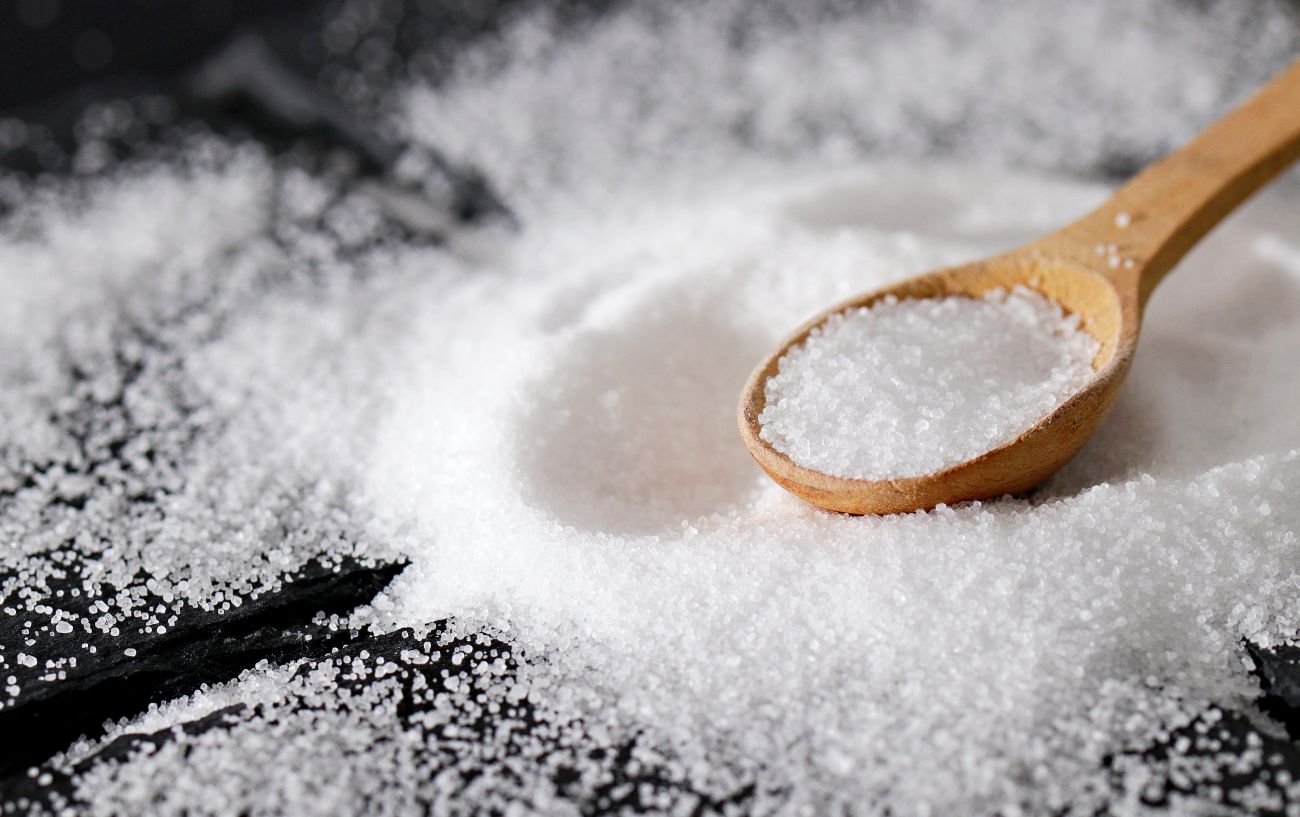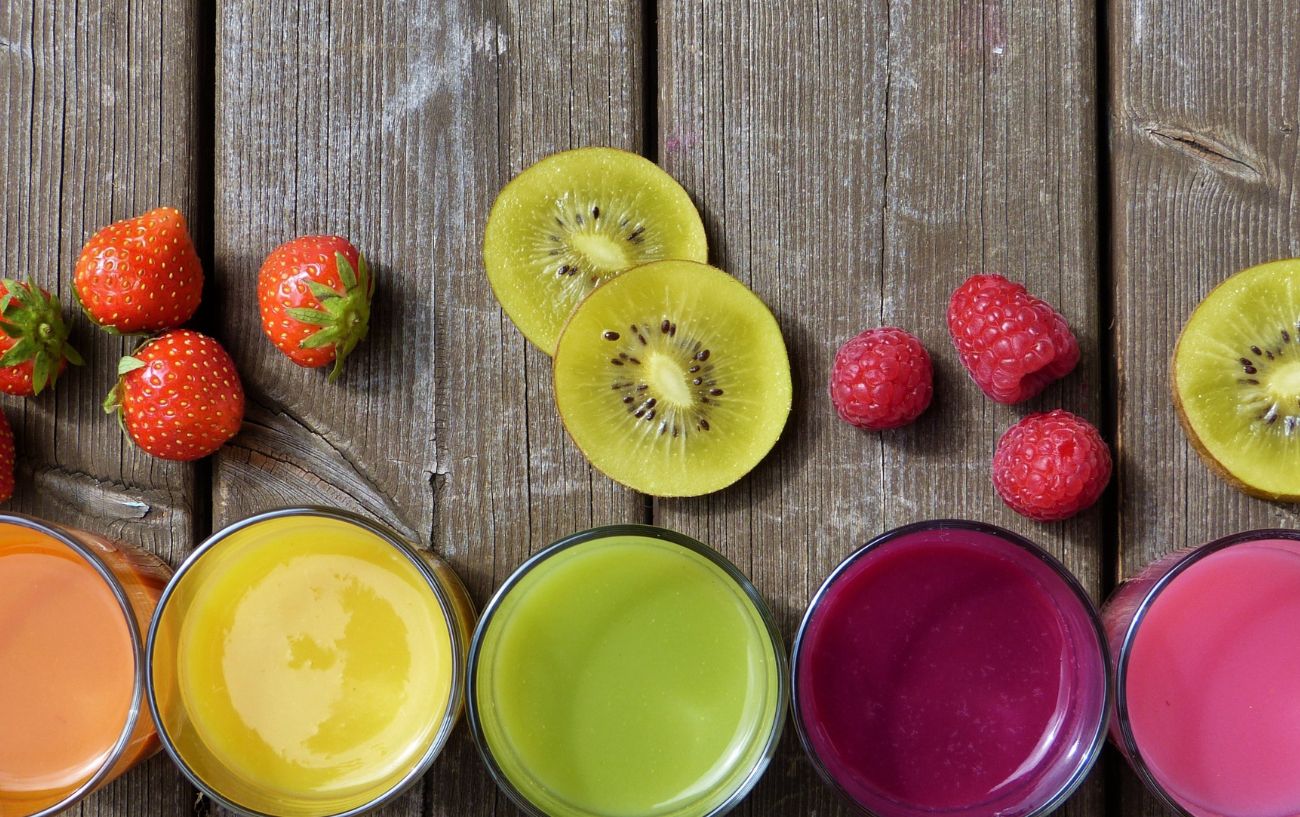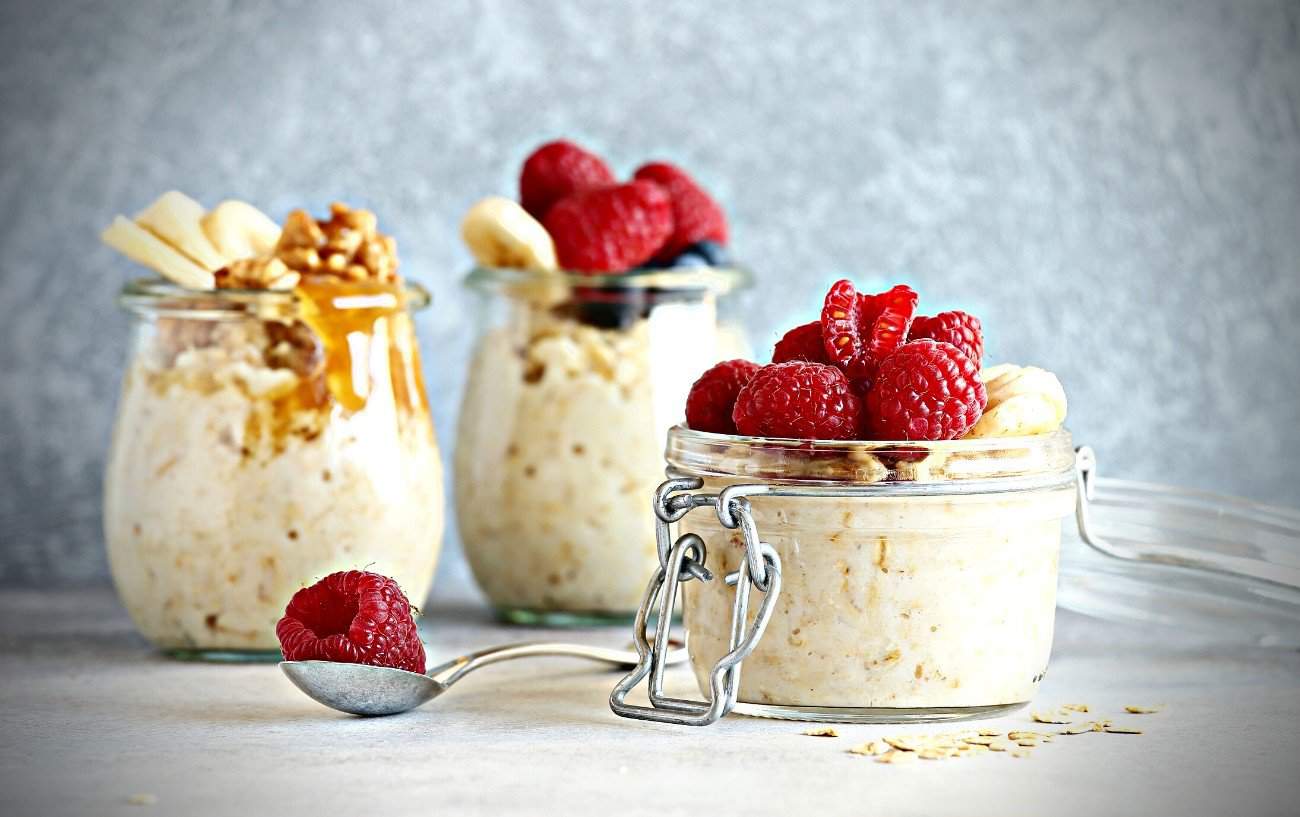One of the benefits of making your own sports drinks is that you can adjust the recipe to meet your nutritional and hydration needs precisely.
If you are doing a longer, more vigorous run, bike ride, or another type of workout, you can add more sugar to the solution to better meet your carb needs.
If you are a heavy sweater, you can add more table salt to help replenish the sodium lost in sweat.
You can also avoid artificial colors and flavors, such as those added to traditional Gatorade and Powerade energy drink products.
In this guide, I will explain how to make your own homemade sports drinks and give you my very own recipes that I use to fuel my training. Let’s make some “greaterade”!

How to Make a Homemade Sports Drink
Before we delve into specific homemade sports drink recipes, it’s helpful to establish what ingredients go into a sports drink and why each ingredient is helpful in the formulation so that you can ensure your homemade sports drinks properly replicate commercial sports drinks or otherwise meet your needs.
What Are The 3 Main Ingredients In Sports Drinks?
Sports drinks include three basic ingredients: water, some type of sugar, and salt. They often have some form of acidity or flavoring as well.
The water provides the fluids to hydrate the body.
The sugars in sports drinks are usually glucose, fructose, sucrose, maltodextrin, or a combination of these, and they help increase the absorption of the fluid and electrolytes.1Orrù, S., Imperlini, E., Nigro, E., Alfieri, A., Cevenini, A., Polito, R., Daniele, A., Buono, P., & Mancini, A. (2018). Role of Functional Beverages on Sport Performance and Recovery. Nutrients, 10(10), 1470. https://doi.org/10.3390/nu10101470
Glucose and fructose are simple sugars. Sucrose is table sugar and is a disaccharide formed by bonding glucose and fructose together.
Maltodextrin is a polysaccharide of glucose molecules linked together. It is often used in sports drinks because it is easily digestible and tastes less sweet than table sugar or plain glucose.

A typical sports drink solution of 6-8% sugar can taste sweet. If you don’t like a sweet flavor but still need carbohydrates for energy, maltodextrin can be a great alternative “sweetener” without cutting the carbohydrates or slowing fluid absorption.
Studies suggest2Jeukendrup, A. E., & Moseley, L. (2010). Multiple transportable carbohydrates enhance gastric emptying and fluid delivery. Scandinavian Journal of Medicine & Science in Sports, 20(1), 112–121. https://doi.org/10.1111/j.1600-0838.2008.00862.x that sports drinks that combine fructose and glucose are more easily absorbed during exercise than glucose-only solutions.
It’s important to note that some sports drinks use artificial sweeteners, but these non-caloric sweeteners do not add nutritional value, nor do they improve performance or provide energy.
Therefore, sugar-free sports drinks negate the benefits of consuming carbohydrates as you exercise.
Finally, the salt in sports drinks helps replace sodium lost in sweat, and the acidity, while not required, helps improve the taste by offsetting the saltiness level required for optimal electrolyte replacement.

How Much Of Each Ingredient Do You Need?
Ultimately, there isn’t a set formulation you must follow to create a homemade sports drink. For the sake of this guide, we will consider sports drinks to be solutions that provide some amount of carbohydrates and electrolytes.
With that said, most sports drinks are considered isotonic solutions, as they contain a carbohydrate concentration of about 6 to 8% by volume.
For example, if you make 1 L (1000 mL) of homemade Gatorade, you would want to add 60 to 80 grams of carbohydrates.
There are 4 grams of sugar per teaspoon.
If you want to be precise, you can also use a food scale to measure your table sugar or maltodextrin powder when making your own sports drinks.
If you want to replicate the carbohydrate concentration of a standard sports drink, measure 60 to 80 g of sugar per liter of fluid.

Adding less sugar will be sufficient for shorter cardio workouts under an hour, but if you want to keep up with your carbohydrate needs and prevent glycogen depletion, you want to aim for at least a 6% solution.
Going much beyond 8% in terms of carbohydrate concentration will delay gastric emptying,3Jeukendrup, A. E., Jentjens, R. L. P. G., & Moseley, L. (2005). Nutritional Considerations in Triathlon. Sports Medicine, 35(2), 163–181. https://doi.org/10.2165/00007256-200535020-00005 although studies have shown that up to 9% will not slow the absorption rate.
A good rule of thumb4Vitale, K., & Getzin, A. (2019). Nutrition and Supplement Update for the Endurance Athlete: Review and Recommendations. Nutrients, 11(6), 1289. https://doi.org/10.3390/nu11061289 aims to replace 30 to 60 g of carbohydrates per hour for workouts lasting 1 to 3 hours.
Typically, adding 1/2 teaspoon of salt per liter of homemade Gatorade is the proper ratio to replicate commercial sports drinks.
An alternative to regular salt is adding 2-3 flavored electrolyte tablets, such as NUUN. This can reduce the need to add additional flavoring and also provide a bit of potassium and magnesium to balance the sodium.

5 Easy Homemade Electrolyte Drink Recipes for Endurance Athletes
#1: Homemade Fruit Juice Sports Drink
Fruit juice makes a great base for homemade sports drinks. Most fruit juice contains a good amount of fructose and glucose, ideal for sports drink beverages. (You will also get some great vitamins in there, such as Vitamin C).
The other benefit of using fruit juice as the base of your homemade sports drink rather than starting with plain cold water and adding honey, table sugar, or maltodextrin is that the fruit juice inherently has a nice flavor.
This means you don’t have to find other ways to flavor your beverage. It’s also easy to prevent palate fatigue by changing up the flavors from workout to workout by using different types of juice.
Fruit juices that work well in sports drinks include pineapple juice, lemonade, cranberry juice cocktails, apple juice, strawberry kiwi juice, watermelon juice, etc., but no fruit juices are off-limits. Choosing 100% juice is ideal.
To make a sports drink with fruit juice, add 400 to 600 mL of your favorite fruit juice to a 1-liter water bottle, add 1/2 teaspoon of salt or 1 to 2 electrolyte tablets, and then top off the bottle with plain water.

#2: Homemade Maltodextrin Sports Drink
If you don’t want your DIY sports drink to be too sweet, you can cut the sugary flavor with maltodextrin while still getting the necessary carbohydrates in the proper concentration to aid hydration.
For this sports drink recipe, add 1/2 cup of maltodextrin powder, 1/2 teaspoon of salt, 1/4 cup of lemon juice, and 900 mL of water. This will make roughly a 6% solution.
#3: Honey Sports Drink
Honey is a great natural sweetener to add to your homemade sports drinks. It is slightly higher in fructose than table sugar but imparts a pleasant floral flavor and a nice consistency.
You can also use molasses, agave syrup, or maple syrup instead of honey. However, honey has a more neutral flavor and color.
To make one liter of homemade sports drink using honey as a sweetener, add 700 mL of water to a one-liter bottle, along with two tablespoons (40 grams) of honey, 1/2 teaspoon of salt, and 230 mL, 1 cup orange juice, lemon juice, lime juice, or pineapple juice.
You don’t have to add juice if you want a very neutral flavor, but lemon juice or lime juice, in particular, will help round out the flavor profile and make your sports drink more palatable.
Depending on the type of juice you use, this sports drink recipe will provide about 60 grams of carbohydrate per 1000 mL, so you are making a 6% carbohydrate solution. You can add more honey and/or juice to increase the carbohydrate concentration.

#4: Coconut Water Sports Drink
Coconut water makes a great base for sports drinks because it is a natural source of electrolytes like potassium, so it helps hydrate the body.
Plain coconut water contains approximately 6 g of sugar per cup (240 mL), 252 mg sodium, and 600 mg potassium.
This means you can make a sports drink with coconut water by adding an additional 1/4 teaspoon of salt per liter and another 40 grams of sugar.
A tasty alternative is to make a homemade tropical piña colada sports drink by combining three cups of coconut water, one cup of pineapple juice, and 1/4 teaspoon of salt.
Refrigerate until you are ready to work out!
#5: Maple Syrup Sports Drink
Maple syrup is a natural sweetener alternative to honey that is high in fructose and also contains glucose, so it is readily absorbed during exercise.
Straight maple syrup has become a popular natural energy gel alternative for marathoners.
You can make your own maple syrup sports drink using 1/4 cup of pure maple syrup, 3 3/4 cups of water, 1/2 teaspoon of salt, a squeeze of lemon, or even a dash of cayenne powder. This DIY sports drink recipe will make about 32 ounces.
The beauty of DIY sports drink recipes is that you can adjust them to your exact preferences and needs for different workouts. Experiment and find what works best for you.
Speaking with a sports nutritionist can also help guide you to your specific rehydration needs.
To learn more about electrolytes, check out this next guide:













This is the information I’ve been looking for. Thank you.
Quite helpful! Thanks
It’s really interesting. thank you
This is perfect for me. Thank you so much!